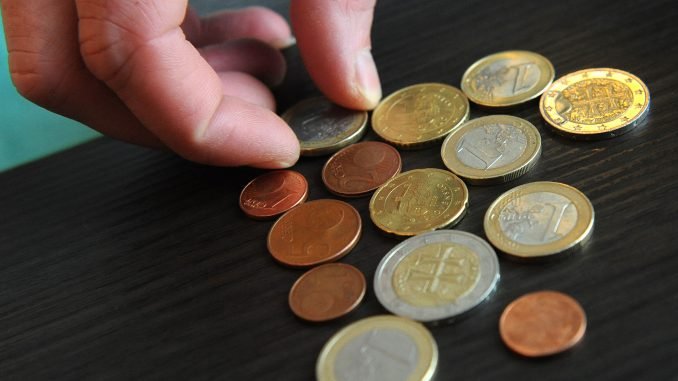
The state of the Lithuanian economy shows that its businesses are able to react quickly to change. However, the performance of economic sectors has been quite mixed, and while some companies have enjoyed their achievements, others have had to make unpleasant decisions, such as cutting or laying off staff. What lies ahead in the autumn? An upturn in an even more challenging year, Vilija Mačiulskytė asked in TV3.lt?
Reviewing the situation of the Lithuanian economy, Tadas Povilauskas, economist at SEB Bank, said it will be challenging as the country’s Gross Domestic Product (GDP) will grow much slower.
“Corporate profits will be lower next year. Wages will also grow more slowly, but inflation should fall. Therefore, real incomes should start to rise. Lithuania’s GDP in the first quarter was much worse than we forecast at the end of April, and in the second quarter, it was better than we predicted. The initial result for the year’s first half (the economy contracted by 0.9%) was similar to what we expected in April, so we have kept our forecast of a 0.2% contraction in 2023 unchanged.
We assume the revised GDP for the year’s first half will be better than announced in the coming months, while the next two quarters will show slightly negative GDP developments. By the way, a few months ago, there were fears that the cereal and oilseed rape harvest this year would be around 15% lower than a year ago, but the evidence suggests that the crops will be at least equal to last year’s, and the agricultural sector’s impact on GDP in the third quarter should therefore not be negative,” commented the economist.
According to T. Povilauskas, GDP growth of 1.8% is projected for next year, but there is a much higher risk of a downward revision than this baseline scenario.
“The first thing to consider is that this year, Lithuania’s GDP decline will be higher than that of many export partners, so the comparative base will be lower next year. Second, in Lithuania, the average wage change exceeded inflation in the third quarter of this year, creating an opportunity for household consumption to recover. Whether households will consume more due to higher real incomes will depend on whether the population becomes more cautious and saves more and whether the situation in the labour market deteriorates more than we expect now.
Third, the government will not strive to be thrifty and will not tighten fiscal policy next year – both because of the desire to stimulate the economy and the desire to appeal to voters in the upcoming elections next year. Fourthly, next year’s final GDP outcome will also depend on whether we can successfully use the Recovery and Resilience Plan next year,” the economist forecast.
Wages will continue to rise
According to T. Povilauskas, the situation in the labour market should stay the same in the near future.
“The situation is stable. However, unemployment is likely to increase towards the end of the year, reaching 7%. However, wages have been above expectations, rising by 12%. Next year, they should grow by 8.2%. The annual decline in industry amounts to 0.5%, with the production of wood products and furniture companies falling the most. This is also reflected in the number of employees, with around 20% fewer people working in companies,” said Mr Povilauskas.
He does not expect industrial production to recover by mid-next year. “However, we do not foresee a significant downturn either. We think the annual change in retail turnover in constant prices at the end of the year may already be slightly positive. The yearly change in consumption of services is likely to
fluctuate between slight growth and decline in the coming months. The higher volume of civil engineering work than a year ago should still positively impact the third and fourth quarters.
We do not expect a recovery in residential construction in the coming quarters. Overall, autumn will be another testing time for the property market – house prices have been stable for almost a year. With the lack of positive news on the market and the declining number of transactions, it is unlikely that prices will be able to withstand at least minimal negative changes for a long time to come,” the economist commented.
Inflation growth will slow down
According to the economist, this is the first year after a three-year hiatus that we have not had to change our inflation forecasts for so long – we expect average annual inflation to reach 9% this year. Next year, it will slow to 2.8%.
“The main source of the projected inflation is likely to come from rising services prices due to rising labour costs. However, the pass-through of labour costs will also not be as easy as in the last two years. Businesses must accept that many companies will see their profits decline next year. We forecast that average pre-tax wages will increase by 8.2% next year, much slower than the 11.5% increase this year. We know the minimum monthly wage will rise by 10% next year. We assume that average wages in the general government sector will also increase similarly. In the private sector, wage developments will be much slower than this year,” said T. Povilauskas.
We know the minimum wage will rise by 10% next year. We assume that average salaries in the government sector will also increase similarly. In the private sector, wage developments will be much slower than this year,” said T. Povilauskas.
He noted that fuel prices have recently risen. “Fuel has become more expensive after certain OPEC agreements. However, diesel is expected to become cheaper on the wholesale market in the coming months”, the economist forecasts. Eurozone GDP forecast for 2024 downgraded.
Euro area GDP forecast for 2024 revised downwards
T. Povilauskas said that the euro area economy would not grow in the second half of this year and that the change in GDP for the whole year will be 0.6% or the same as forecast in May.
“However, we have lowered our GDP growth forecast for next year from 1.6% to 0.8%. The latest purchasing managers’ indices suggest we will not see better industrial performance in the coming months. The fading growth in the services sector is not a positive sign either.
However, household consumption should slowly recover thanks to lower energy prices than a year ago and generally lower inflation,” said T. Povilauskas.
SEB Group economists forecast average annual inflation in the euro area at 5.5% this year and just 1% next year.
“However, core inflation will still be above 2% next year. The ECB will not be surprised if it raises the base rate again in the autumn, but we stick to the baseline scenario that there will be no such decision. We continue to believe that the ECB will cut base rates for the first time in the summer of next year and that the total rate cut next year will be 0.75 percentage points, to 3 per cent,” T. Povilauskas calculated.
He said developments in the US economy in the first half of 2023 greatly exceeded expectations. “Therefore, we have raised our GDP growth forecast from 0.7 to 2 per cent. We have not changed
our forecast of 0.9 per cent economic expansion for next year. In the future, we believe there are sufficient assumptions to suggest that the US will avoid a hard landing. Unemployment in the US will increase, but at a much lower rate than in the past, when the US central bank was raising interest rates rapidly. A 0.5 percentage point increase in unemployment would be enough to slow wage growth in the US and prompt the central bank to loosen its tight monetary reins. We forecast that the US central bank will cut interest rates for the first time in the spring of 2024 and that by the end of that year, the base rate will be 4%, or 1.5 percentage points lower than now. We believe that the euro will be stronger against the US dollar next year than it is this year and that the euro will be worth USD 1.16 at the end of 2024,” the economist predicted.


Be the first to comment